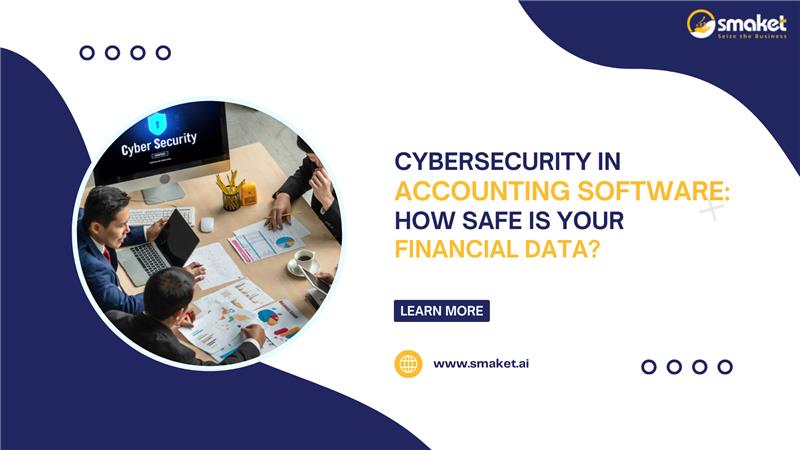In today’s digital-first world, accounting software has become indispensable for businesses of all sizes. From automating invoicing and payroll to simplifying tax filings, platforms like QuickBooks, Xero, FreshBooks, and Sage are reshaping how organizations manage their finances. But as we shift our most sensitive financial information to cloud-based tools, one critical question looms large: How safe is your financial data?
Why Cybersecurity in Accounting Software Matters
Accounting software is a goldmine for cybercriminals. It houses sensitive information such as:
- Bank account details
- Credit card numbers
- Employee Social Security numbers
- Tax records
- Vendor and client payment details
If this data falls into the wrong hands, the consequences can be severe: financial loss, reputational damage, legal liabilities, and regulatory penalties.
Common Cyber Threats Targeting Financial Data
Here are some of the most common cybersecurity threats aimed at accounting software:
1. Phishing Attacks
These are attempts by attackers to trick users into giving away login credentials or financial information. Often disguised as legitimate emails or messages, phishing is one of the top causes of data breaches.
2. Ransomware
Cybercriminals can encrypt your data and demand a ransom for its release. Accounting systems are prime targets because the loss of access can cripple a business’s operations.
3. Man-in-the-Middle (MITM) Attacks
If data is transmitted without proper encryption, hackers can intercept and manipulate it during transit between the user and the software.
4. Unauthorized Access
Weak or reused passwords, lack of two-factor authentication (2FA), and unmonitored user accounts can open the door to unauthorized users.
5. Insider Threats
Not all threats come from outside. Employees with access to sensitive data might intentionally or unintentionally leak or misuse financial information.
How Secure Is Today’s Accounting Software?
Modern accounting software providers understand the importance of security and implement a variety of safeguards. Here are some common protections you can expect:
1. Encryption
Most reputable platforms use end-to-end encryption to secure data both in transit and at rest.
2. Multi-Factor Authentication (MFA)
MFA adds an extra layer of security by requiring users to verify their identity through a second device or method.
3. Access Controls
Role-based permissions ensure that employees only have access to the data necessary for their roles.
4. Regular Backups
Data is routinely backed up to prevent loss from system failures or cyberattacks.
5. Audit Logs and Monitoring
Activity logs allow administrators to monitor who accessed what and when, helping to detect suspicious behavior.
Best Practices for Businesses Using Accounting Software
Even with built-in protections, companies must take proactive steps to strengthen their cybersecurity posture:
- Use strong, unique passwords and change them regularly.
- Enable multi-factor authentication for all users.
- Regularly update your software to patch security vulnerabilities.
- Train employees to recognize phishing and social engineering attacks.
- Review access rights periodically and remove old or unused accounts.
- Monitor activity logs for unusual behavior.
- Work with cybersecurity professionals to conduct periodic audits and risk assessments.
The Regulatory Angle: GDPR, SOX, and More
Depending on your industry and location, various regulations may require you to safeguard financial data. For example:
- GDPR (Europe) mandates strong data protection practices.
- SOX (U.S.) requires companies to ensure the accuracy and integrity of financial records.
- PCI-DSS applies if you store or process payment card information.
Non-compliance can lead to heavy fines, so choosing accounting software that supports regulatory requirements is essential.
Conclusion
Accounting software has revolutionized financial management, offering unmatched convenience and efficiency. But this convenience comes with risks. Ensuring your financial data is secure is not just the software provider’s responsibility — it’s a shared one.
By understanding the threats, leveraging the right tools, and following cybersecurity best practices, you can protect your financial data and maintain the trust of your clients, partners, and employees.

